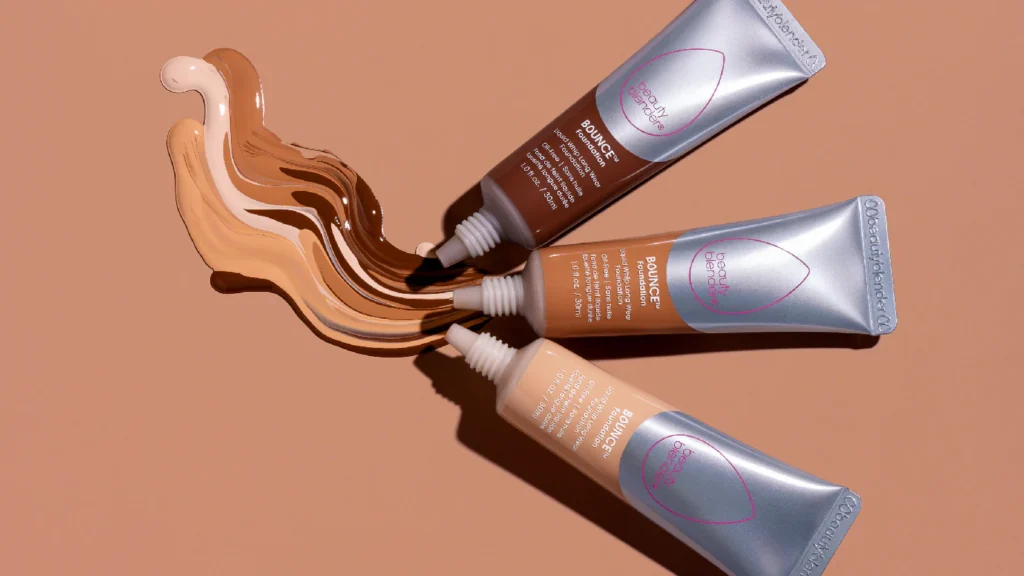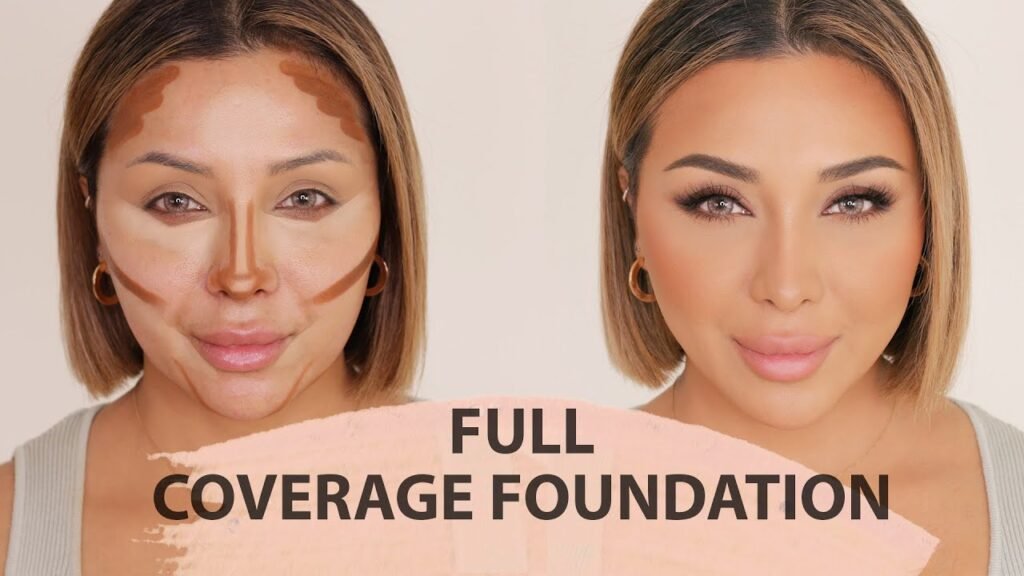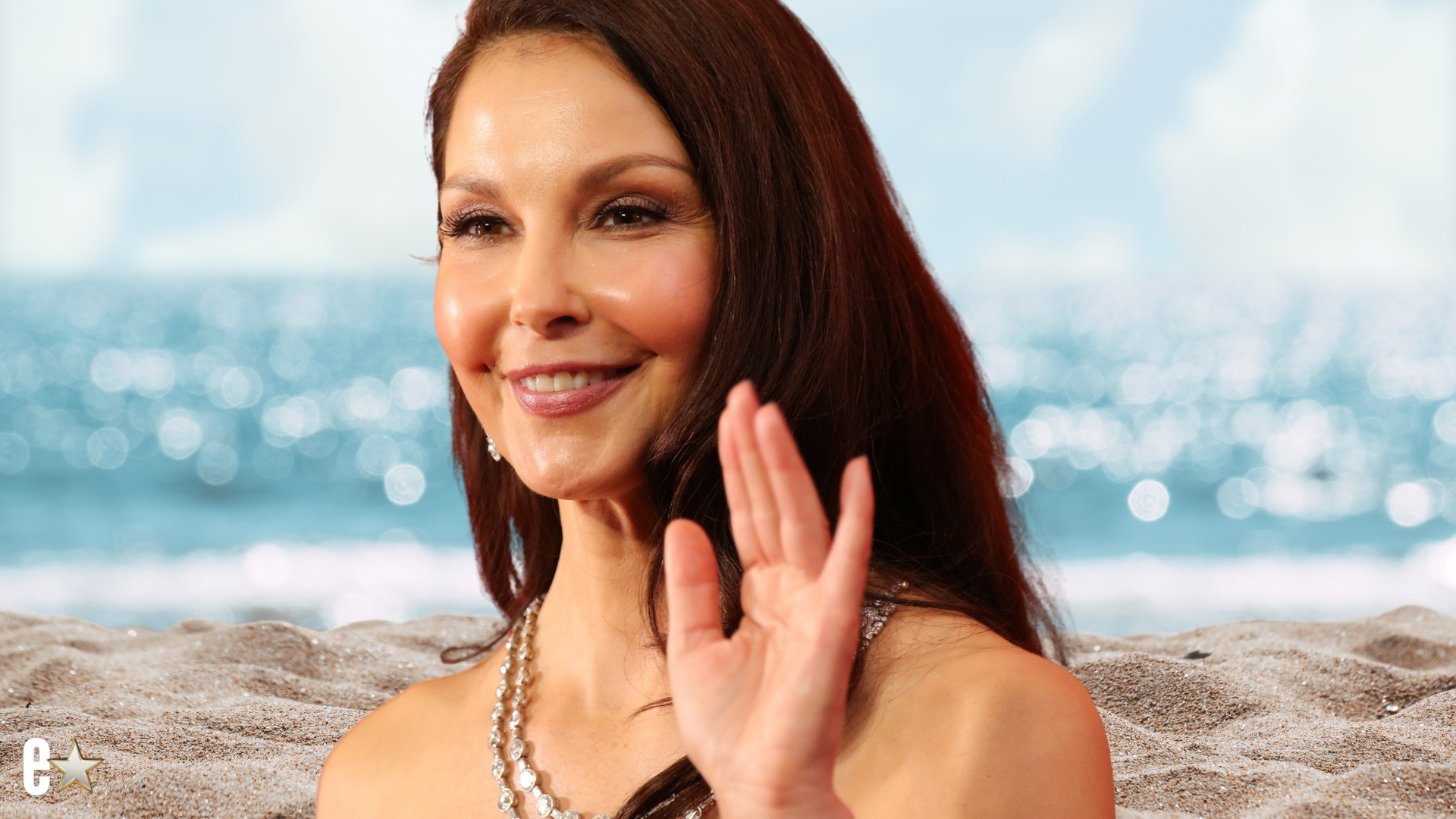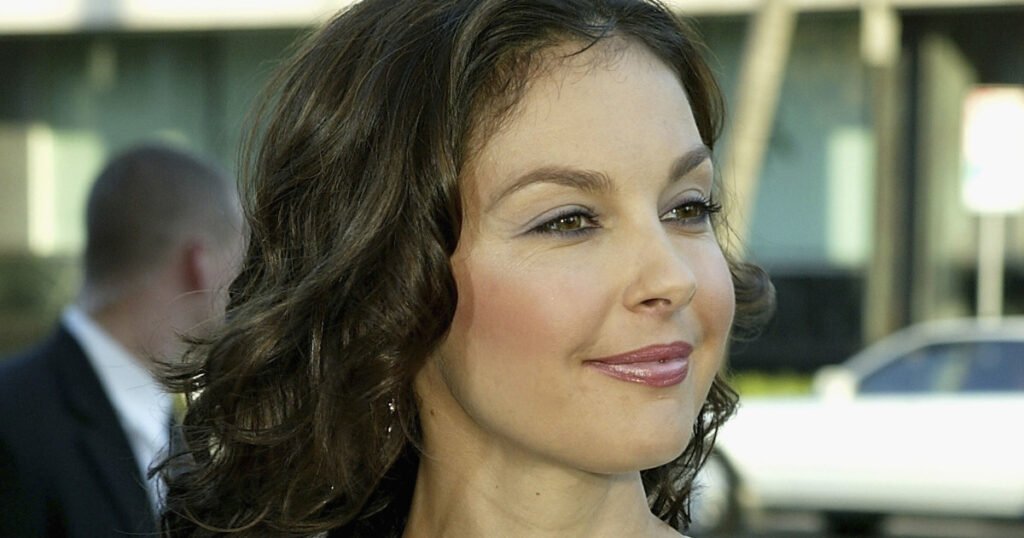Beauty
Rhode’s Billion-Dollar Leap and the Rise of Skin-First Weddings: 2025 Beauty Trends Redefined
From Hailey Bieber’s blockbuster deal with Elf Beauty to minimalist bridal aesthetics and grooms embracing makeup, 2025 is shaping up to be a revolutionary year for the beauty industry.

In a year already brimming with seismic shifts across the beauty industry, two standout trends are defining 2025: a billion-dollar acquisition that cements Hailey Bieber’s Rhode as a global powerhouse, and a fresh, skin-first approach to wedding day beauty that’s transforming how both brides and grooms prepare for their big moment.
A Billion-Dollar Disruptor: Rhode Joins Elf Beauty
In a landmark deal, Elf Beauty is acquiring Hailey Bieber’s skincare brand Rhode for a staggering $1 billion — one of the most significant mergers in recent beauty industry history. Despite the ongoing challenges in the M&A landscape, from economic uncertainty to investor caution, Rhode’s sale stands out as a testament to genuine brand value, strategic growth, and modern-day influence.
Since its 2022 debut, Rhode has gone from a DTC startup to a global beauty force, raking in $212 million in net sales with only 10 products. This rapid ascent is credited to Bieber’s active involvement in product innovation, viral marketing, and brand storytelling — a combination that industry insiders now see as essential for celebrity-founded brands aiming for longevity.
Elf CEO Tarang Amin called the acquisition a “perfect marriage,” pointing to Rhode’s influence, community-first approach, and calculated product strategy as key differentiators. Bieber will stay on as founder and expand her role as Chief Creative Officer, continuing to shape the brand’s global vision and product line — with aspirations to become the biggest beauty brand in the world.
Bridal Beauty Gets a Makeover: Skin Over Sparkle
Meanwhile, weddings in 2025 are undergoing their own transformation. According to Pinterest’s latest wedding trends report, the biggest bridal beauty trend is a “skin-first” aesthetic — a minimalist, natural glow that puts skin health above layers of makeup. Brides are increasingly seeking a no-makeup look that prioritizes skincare and self-care over bold glam, embracing authenticity and comfort as key style values.
In a twist on tradition, grooms are stepping into the beauty spotlight too. For the first time, there’s a significant spike in men searching for wedding makeup inspiration. From touch-up concealers to subtle brow grooming, modern grooms are reimagining their preparation rituals with the same level of care and personalization once reserved for brides.
This shift towards individualized, wellness-centric routines is prompting beauty brands to rethink their offerings. Escapism, fantasy, and intentional self-expression are rising themes — and not just for the wedding day, but across the entire multi-day wedding experience that has become the new normal.
The Common Thread: Personal Connection
Whether it’s Rhode’s explosive growth driven by strategic founder involvement or brides embracing their natural beauty, one theme remains consistent: authenticity sells. Consumers no longer want superficial perfection; they want products and experiences that reflect their values, individuality, and aspirations.
In an era where beauty is no longer one-size-fits-all, 2025 is proving that the future belongs to brands and trends that meet people where they are — on their skin, in their stories, and through their communities.
Beauty & Lifestyle
7 Times Wearing Full-Coverage Foundation Turned Into a Beauty Blunder
From ghostly flashback photos to chalky matte finishes, Gen X makeup trends prove less isn’t always more. Wearing Full-Coverage Foundation Turned Into a Beauty Blunder

There was a time when beauty was defined not by glowing, natural radiance but by how perfectly matte your face could look. Decades before the era of “glass skin” and minimal makeup routines popularized by South Korea’s beauty industry, the ’80s and ’90s were all about full-coverage foundation. To many, it felt like a badge of honor—an impenetrable mask that erased every pore, every shine, and sometimes even every hint of natural skin tone.
But as we look back, it’s clear that what seemed like perfection at the time was, in fact, one of the biggest beauty blunders. And Gen X, growing up on powder compacts and chalky liquid formulas, carried the torch for the heavy-handed foundation look.
The Matte Obsession
During the ’80s and ’90s, shine was the enemy. Many Gen X women and men recall hearing their mothers or grandmothers say, “I have to powder my nose.” This phrase wasn’t just about touch-ups—it symbolized an entire beauty philosophy. To be polished meant to be matte, even if your natural skin was already flawless.
The matte obsession was so intense that people intentionally picked shades one to two tones lighter than their natural complexion. The result? A flat, mask-like finish that gave photographs a ghostly, unnatural effect. The culprit was often titanium dioxide, a common ingredient in powders and foundations of the time, which reacted harshly with camera flash. Back then, photos weren’t digital; these were film cameras, so every wedding album or high school yearbook immortalized that pale, powdery look.
Powder Foundations and the “Airbrushed” Look
The rise of powder compacts was another defining beauty moment. Brands pushed powder foundations as the ultimate shortcut to flawless skin. With promises of an “airbrushed” look, these powders covered everything—pores, freckles, even natural undertones.
However, the irony was striking. Under harsh lighting or camera flashes, the powder didn’t look seamless. Instead, it created an ashy, mask-like appearance. This was especially true in flash photography, leaving people looking almost ghostly in pictures. If you’ve ever looked at a Gen X family photo and noticed that everyone’s faces were lighter than their necks, you’ve seen this makeup mishap in action.

Foundation Matching Mistakes
Another common blunder was ignoring the neck when choosing foundation shades. Back then, makeup matching was often about the hand or jawline—completely overlooking the fact that a mismatch would become glaring in photos. Today, beauty influencers on platforms like TikTok remind us that blending foundation into the neck is non-negotiable, but for many in the ’90s, that lesson came too late.
When Heaviness Meant Perfection
Why was piling on heavy foundation so popular? In part, it was cultural. Flawless, porcelain skin was considered the epitome of beauty, and showing natural pores or texture was frowned upon. Even if someone had great skin, they still felt compelled to cover it up. Unlike today’s minimalist trends where celebrities like Hailey Bieber and Zendaya embrace glowing, skin-like finishes, the ’90s ideal was about hiding imperfections at all costs.
Lessons Learned from Gen X
Fast forward to today, and the mistakes of Gen X serve as valuable beauty lessons. Modern formulations favor breathable coverage, skin-matching technology, and dewy finishes that highlight natural texture. Beauty gurus emphasize that less is more, and glowing, natural skin is now celebrated.
The once-popular matte-heavy style has been replaced by luminous foundations, tinted moisturizers, and products designed to enhance, not hide. While nostalgia for ’90s trends often resurfaces in fashion, this particular beauty habit has (thankfully) stayed in the past.
Pop Culture Influence
Pop icons of the ’90s like Madonna, Cindy Crawford, and even TV stars from shows like Beverly Hills, 90210 reflected these beauty standards. Watching them on VHS tapes, the matte skin look was aspirational. But in hindsight, even celebrities fell victim to mismatched shades and chalky textures.

The Rise of Skin Positivity
Today, we live in a completely different era. Glass skin, clean girl aesthetic, and skinimalism dominate the conversation. Brands are more inclusive, offering broader shade ranges and formulas that celebrate skin diversity. Social media platforms like Instagram and TikTok have democratized beauty advice, teaching younger generations what Gen X had to learn the hard way.
Conclusion
Wearing full-coverage foundation decades ago may have felt like the ultimate beauty trick, but looking back, it was a clear blunder. Chalky finishes, ghostly flashbacks, and mismatched shades left many regretting their choices when flipping through old photo albums.
Still, these beauty mistakes were stepping stones, shaping how far the industry has come. Today, the focus is on authenticity, glow, and embracing natural skin. And if there’s one thing we can all agree on, it’s that no one wants to relive the ghostly flashback era again.
For more stories that dive into beauty trends past and present, visit Daily Global Diary.
Celebrity Style
Pamela Anderson and Liam Neeson Spark Romance Rumors on Live TV Craig Melvin Asks the 1 Question Fans Are Dying to Know
Craig Melvin corners The Naked Gun stars with a cheeky question about their chemistry — and America can’t stop speculating about Pamela Anderson and Liam Neeson’s off-screen bond.

America is asking the question Craig Melvin dared to say aloud on live TV — Are Pamela Anderson and Liam Neeson actually dating in real life?
Table of Contents
It all started when the two stars of the upcoming reboot The Naked Gun appeared on the TODAY show on July 29, 2025, to promote the film’s August 1 release. But instead of sticking to a scripted chat about the slapstick comedy, Craig Melvin threw in a curveball that caught the internet — and the stars — off guard.

“You’re both single right now,” Craig said with a grin. “There’s clearly chemistry on display throughout this film. Are you two an item?”
Cue nervous laughter. Cue social media chaos.
“Craig!” Neeson exclaimed, eyes wide in mock disbelief.
“I don’t understand the question,” replied Pamela Anderson, her tone exasperated, her body language — maybe just slightly amused?
And just like that, the world had a new mystery to solve: Are Liam and Pamela a thing?
“Let’s Just Let It Breathe” – Liam Neeson’s Subtle Clue
Liam Neeson, who plays Frank Drebin Jr., the son of Leslie Nielsen’s original Naked Gun character, tried to cool the moment with a diplomatic answer.

“I had never met Pamela before. We met on set. And we discovered we had a lovely, budding chemistry — as two actors,” he said. Anderson nodded in agreement.
But fans and even Craig weren’t ready to let it go.
“You’re watching the beginning of the breathing of a budding relationship,” Craig teased, clearly having too much fun.
As the interview wrapped, he added with a smirk, “We want you to come back when it’s official.”
And with that, a nation’s curiosity exploded into flame.
Social Media Reacts: “Chemistry You Can’t Fake”
From X (formerly Twitter) to Reddit threads, fans lit up with conspiracy theories and hope. One user tweeted,

“That’s not acting, that’s chemistry you can’t fake. Liam and Pam? I’m here for it.”
Another said,
“Liam Neeson lost the love of his life in 2009. Maybe, just maybe, Pamela Anderson is the peace he deserves.”
The speculation isn’t unfounded. Both stars are currently single. Anderson has had a famously tumultuous love life, including marriages to Tommy Lee, Kid Rock, Rick Salomon, and Dan Hayhurst, whom she separated from in 2022.
Neeson, on the other hand, was married to the late Natasha Richardson, who tragically passed away in a skiing accident in 2009.
On-Screen Lovers, Off-Screen Intrigue
In The Naked Gun, Neeson’s Frank Drebin Jr. and Anderson’s Beth Davenport are entangled in a romantic plot that channels the campy brilliance of the 1988 classic. Their banter, eye contact, and effortless timing have been described as “electric” by early reviewers.
So is this Hollywood chemistry… or something more?
“Actors often blur the line between performance and personal,” said a casting insider familiar with the production. “But I’ve never seen Liam smile that much on set. It wasn’t just the script.”
Why America Cares So Much
Why is this potential pairing so fascinating?
For starters, it’s unexpected. Anderson — a former Baywatch icon and activist — and Neeson — known for serious action roles like Taken and Schindler’s List — don’t immediately scream “perfect match.”
But maybe that’s why it works.
“They’re both at a point in their lives where they’ve seen enough, loved deeply, and aren’t playing games,” wrote a fan on X. “That’s rare.”
What Craig Melvin Did Wasn’t Just a Gag
Craig Melvin might have been joking, but his question tapped into something bigger. People are rooting for real love in a city known for short-lived flings and PR pairings.
It wasn’t just tabloid bait. It was a reminder that even in the spotlight, authentic connection still matters — and still surprises.
So… Are They Dating or Not?
As of now, there’s no confirmation. No paparazzi sightings. No hand-holding outside Sunset Tower. No cryptic Instagram captions.
But sometimes, the lack of denial is its own kind of confirmation.
Neeson’s phrasing — “Let’s not mold this. Let’s just let it breathe” — might be the most Liam Neeson answer of all time. Deep. Quiet. Sincere.
America’s watching. Hollywood is watching. And Craig Melvin? He’s probably already drafting his follow-up questions for when they return.
Pamela Anderson and Liam Neeson may not be officially a couple — yet — but the internet is already shipping them hard.
And if The Naked Gun reboot becomes a hit, expect this slow-burning “just let it breathe” chemistry to get a whole lot hotter.
for more news www.DailyGlobalDiary.com
Celebs
Ashley Judd’s 1 Bold Swimsuit Video Is Breaking the Internet and Empowering Women Everywhere
I don’t care, says actress Ashley Judd as she redefines beauty, aging, and confidence with her raw swimsuit message in the Baltic Sea

Table of Contents

Hollywood actress and humanitarian Ashley Judd has once again proven that true power lies in authenticity. On July 22, 2025, the 56-year-old stunned fans not with makeup or glamor, but with a bathing suit, a jellyfish, and three brave words: “I don’t care.”
While vacationing near the Baltic Sea, Judd posted a now-viral Instagram video in a simple one-piece swimsuit, exuding the kind of raw confidence that rarely finds space in today’s curated digital world. What followed was a profound message — about aging, menopause, body acceptance, and the joyful rebellion of embracing your inner child.
“Hi, I’m Ashley and I am a member of the ‘We Don’t Care Club,’” she declared in the video, laughing while wading through the cold waters. Judd openly talked about “chafing,” “cellulite,” and what she affectionately called a “hungry bum,” adding with a grin, “I don’t care.” This isn’t just cheeky fun — it’s a call to dismantle harmful norms and celebrate imperfection.
The We Don’t Care Club isn’t just a concept Judd tossed out; it was created by Melani Sanders, a content creator promoting body neutrality and emotional liberation. Judd embraced it fully, declaring herself not just a proud participant, but also a co-founder of the equally whimsical MSU Club — short for “Make Stuff Up.”

“It’s for our inner children,” Judd explained while cradling a non-stinging jellyfish, her voice light and childlike. “And if I make something up, and it’s not scientifically correct, I really don’t care.”
While Judd’s message might sound humorous on the surface, it carries layers of social commentary. Her candid video criticizes how society treats women’s bodies, especially those of postmenopausal women. As Judd wrote in her caption, “Menopause is human biology. Universal. And beautiful.”
And she’s not new to pushing boundaries.
The Double Jeopardy star has been outspoken about her journey since losing her mother, Naomi Judd, in April 2022. Following the tragedy, Judd suffered weight gain and a second leg fracture — one of multiple in recent years. Yet, through it all, her message stayed the same: “I don’t care what people think of me.”
In a 2022 interview with Dr. Jonathan Flint, she opened up: “You try being a once ultra-fit woman who’s 54 and put on some weight. That is going to spark some very sexist conversation… but it’s none of my business what people think.”
Her Instagram caption this week echoed the same sentiment but was laced with joy. “I bask in the unselfconscious being-ness of my True Self,” she wrote. “My Inner Child is free to emerge.”

The video wasn’t all talk — Judd demonstrated playful “water tricks” including a hair flip, backflip, belly flop, and even a handstand. Each act was a metaphor for reclaiming joy, especially for women burdened by the pressures of aging gracefully in silence.
Judd challenged followers to reflect:
“If you let yourself be free, how would your True Self & Inner Child spend your Carefree Timelessness?”
The actress’s refusal to conform has struck a nerve — and a chord. Thousands of women in the comments applauded Judd’s bravery, thanking her for sharing what so many feel but rarely say. Comments like “You just healed something in me,” and “Thank you for letting me feel seen,” flooded her post.
In a society that remains obsessed with youth and perfection, Judd’s decision to post unfiltered, cellulite-proud content is nothing short of revolutionary.
Her activism isn’t just digital. Judd is a long-time UNFPA Goodwill Ambassador, a voice for gender equality, and has spoken at the World Economic Forum about topics ranging from child sexual abuse to mental health.
She has also taken part in documentaries, authored books, and championed various social justice causes. Yet, it may be this swimsuit video — simple, silly, and sincere — that leaves one of her most lasting impressions.
What began as a casual vacation clip has now sparked conversations about the freedom of aging, letting go, and how to care less about approval and more about joy.
As Judd concluded, “Into the Sea for me, to splash & play.”
A perfect metaphor for shedding shame — and diving straight into self-love.
for more news follow or visit : www.DailyGlobalDiary.com
-

 Entertainment1 week ago
Entertainment1 week agoDolly Parton delays Las Vegas concerts by nine months citing health challenges but promises unforgettable return
-

 Entertainment1 week ago
Entertainment1 week agoZoey Deutch engaged to comedian Jimmy Tatro after 4 years of dating with romantic beach proposal
-

 Entertainment4 days ago
Entertainment4 days agoSurvivor Season 49 episode 2 shocker Kele tribe loses again and fans stunned by who went home
-

 Sports3 days ago
Sports3 days ago‘Silent killer’ Cam Schlittler stuns Red Sox as Yankees rookie makes history with 12 strikeouts
-

 Politics1 week ago
Politics1 week agoBarack Obama blasts Trump over Tylenol autism claim calling it ‘violence against truth’ but that’s not all he said…
-

 Sports5 days ago
Sports5 days agoTottenham’s Champions League wake-up call… why Spurs must stop looking like a Europa League side
-

 Technology News6 days ago
Technology News6 days agoBitchat downloads skyrocket in Madagascar as protests erupt over water and power cuts… Jack Dorsey’s app becomes a lifeline
-

 Entertainment2 days ago
Entertainment2 days agoCharlie Hunnam reveals chilling transformation into serial killer Ed Gein for Ryan Murphy’s Monster… “I didn’t want to glamorize it”




























